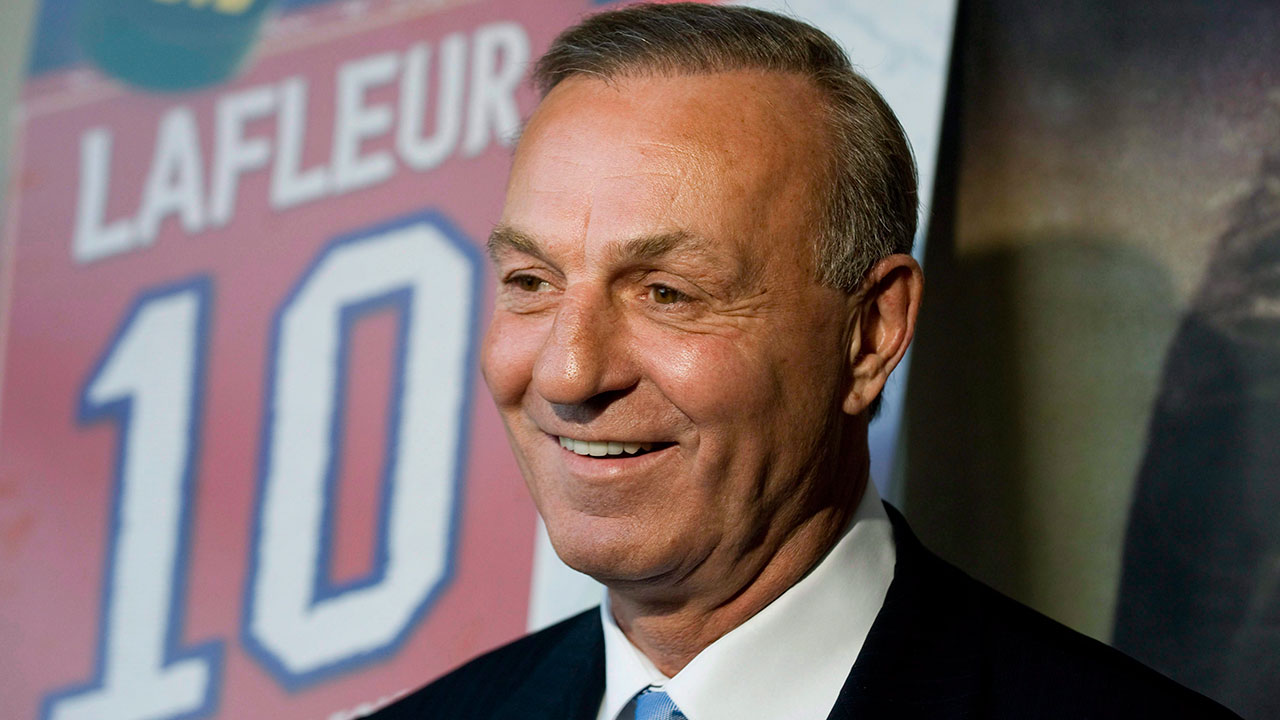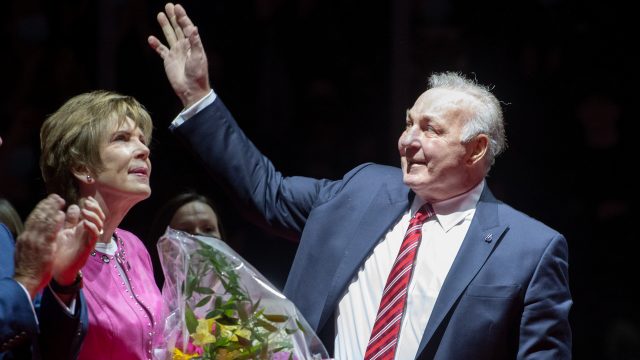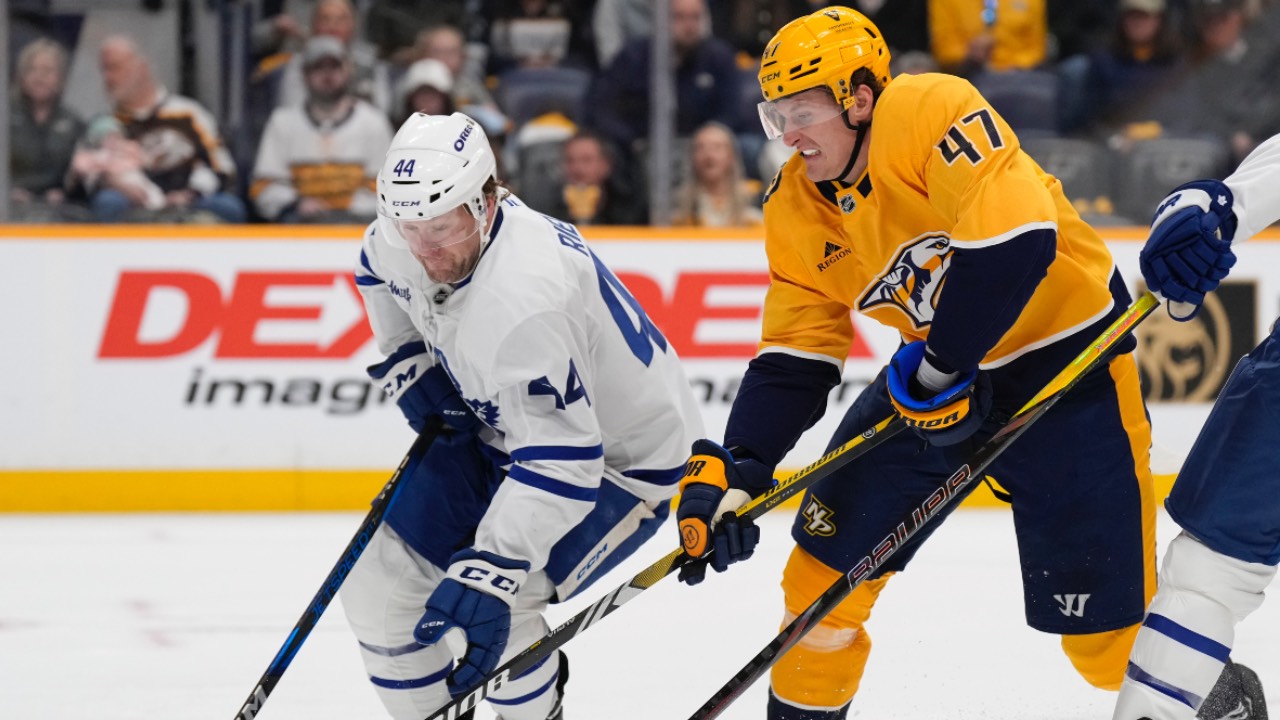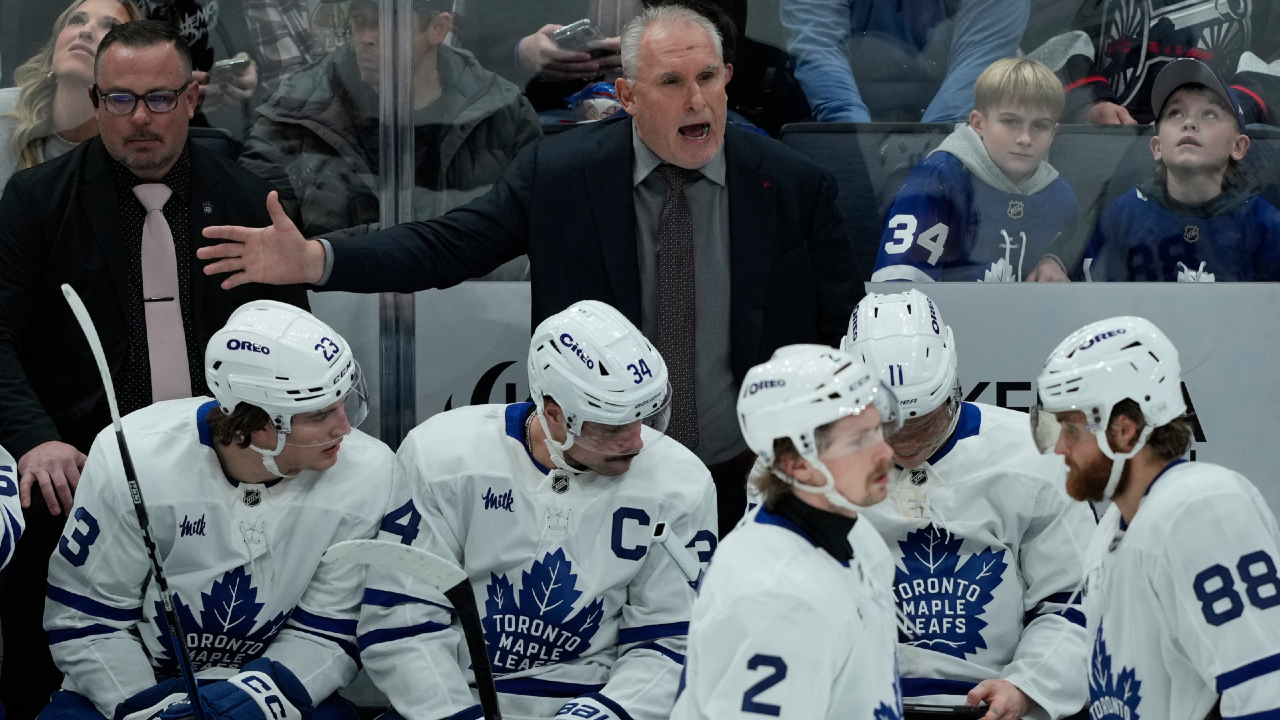
In an age before hockey players became helmeted and anonymous — in a rink inhabited by so many ghosts — Guy Lafleur would begin his flight down the wing, his blond mane flowing in his wake, and everyone in the Forum would hold their breath for just an instant.
Hockey for the spectator is not a game of anticipation. It is so fast, so fluid, that most of the great moments arrive without a countdown. You didn’t know Paul Henderson was going to pound in that rebound until a second before he did. You didn’t really see Sidney Crosby’s golden goal coming. Outside of breakaways or booming slapshots unloaded with a wind-up from the point, it all goes by in a flash.
But with Lafleur, so often there was a prelude to the main event. The acceleration. The defencemen skating backwards as fast as they could. The goaltender suddenly on high alert.
The Montreal crowd chanting, like a pulse: “Guy, Guy, Guy.”
There was, and there is, nothing else like it in the sport.
Guy Lafleur, whose death was announced by the Canadiens on Friday, was, arguably, the greatest player on the greatest team in NHL history. During the Montreal Canadiens’ last dynasty — in the process of winning consecutive Stanley Cups from 1976 to 1979, they lost a total of just 46 regular-season and 10 playoff games — Lafleur won the scoring title three times and twice won the Hart Trophy as the NHL’s most valuable player.
He was the Quebecois heir to Maurice Richard and Jean Beliveau. (Next came Patrick Roy, playing a very different position, and after him came no one….) The succession was less certain than it might seem in hindsight, and it almost didn’t happen at all. But for a flash of managerial genius, Guy Lafleur might be remembered as the first great California Golden Seal.
He grew up in Thurso, Que., a mill town on the Ottawa River close to the Ontario border. Legend has it that he so loved hockey as a boy that he’d go to sleep at night wearing his gear, ready to jump on the backyard rink his father had made the moment he woke up.
Lafleur first came to the attention of the hockey world at the now famous Quebec Pee-Wee International Tournament, then in its early years, where he debuted in 1962 playing for a traveling team from nearby Rockford, Ont., and then in 1963 and 1964 with teams from Thurso. Lafleur scored 30 of Rockford’s 48 goals that first year, including seven in one game, and scored a total of 64 goals through the three tournaments.
At age 15, he graduated to the Quebec Jr. Aces, where he played three seasons, followed by two years with the Quebec Remparts. In his first season in major junior hockey, Lafleur set a regular-season scoring record with 103 goals. In his final season, he shattered that mark, scoring 130 in 62 regular-season games, and leading the Remparts to the Memorial Cup.
He was hailed as the province’s next NHL superstar — but he was not alone. Also part of the same draft class was the Drummondville-born star of the St. Catharines Black Hawks of the Ontario Hockey League, Marcel Dionne.
There are many reasons why Sam Pollock, the long-time general manager of the Canadiens, was considered the sport’s pre-eminent front-office genius, but his manoeuvering around the 1971 entry draft should be near the top of the list. Understanding that both Lafleur and Dionne were coming, and no longer the beneficiary of the age-old practice that allowed the Habs first crack at the best French Canadian talent, he contacted the Golden Seals and suggested a trade to the team’s owner, Charlie Finley. The deal they agreed to was a simple swap of first-round picks – Montreal’s for California’s, with the Canadiens throwing in veteran Ernie Hicke to sweeten the pot.
It was, of course, highway robbery. (It has also long been suggested that Pollock shipped Ralph Backstrom to the Los Angeles Kings that same season in hopes that Backstrom would keep the Kings from tumbling to the bottom of the league — and the top of the draft. If that was indeed the intent, it worked.)
The Habs won the Stanley Cup in 1971, and Beliveau retired. Now, one way or another, they would have his successor.
Pollock deliberated before finally using the Seals’ pick to take Lafleur over Dionne, and at first it seemed like he had made a terrible mistake. Dionne immediately became an elite scorer with the Detroit Red Wings while Lafleur struggled, burdened by the enormous expectations and chafing under coach Scotty Bowman, who refused to employ him on his top two lines and power play.
At the end of his rookie season, Lafleur didn’t receive a single vote for the Calder Trophy.
In 1973, he won his first of five Stanley Cups, but it wasn’t until the 1974–75 season that Lafleur blossomed, scoring 50 goals for the first of what would be six consecutive years.
And that’s when his electric image was forever etched in the imagination of Montreal hockey fans, his hair blown back as if by a Hollywood wind machine.
Lafleur’s time in Montreal ended badly, just as Roy’s would years later. By 1985 the dynasty was a distant memory. Lafleur’s old teammate, Jacques Lemaire, was the head coach, and his defensive approach to the game was never going to be a comfortable fit. When Lafleur asked to be traded, GM Serge Savard — another former teammate — knew that he couldn’t accommodate his request without being run out of town. So he refused, and Lafleur retired 19 games into the season as the leading scorer in Montreal’s long and glorious history.
There was a comeback three years later with the New York Rangers and Quebec Nordiques after Lafleur had already been inducted into the Hockey Hall of Fame (the only two other players to do that: Gordie Howe and Mario Lemieux), but by then he was only a shadow of the player he had once been.
Still, there would be one final, memorable night, when Lafleur returned to Montreal for the first time with the Rangers; when the crowd stood and cheered to welcome him; when, still playing without a helmet (the NHL grandfathered in the rule that made wearing one mandatory), he scored two goals and was named the game’s first star.
And the sound that night was like it had once been, the chant echoing to the rafters, a celebration, a thank you, a remembrance of glories past.
“Guy, Guy, Guy….”






